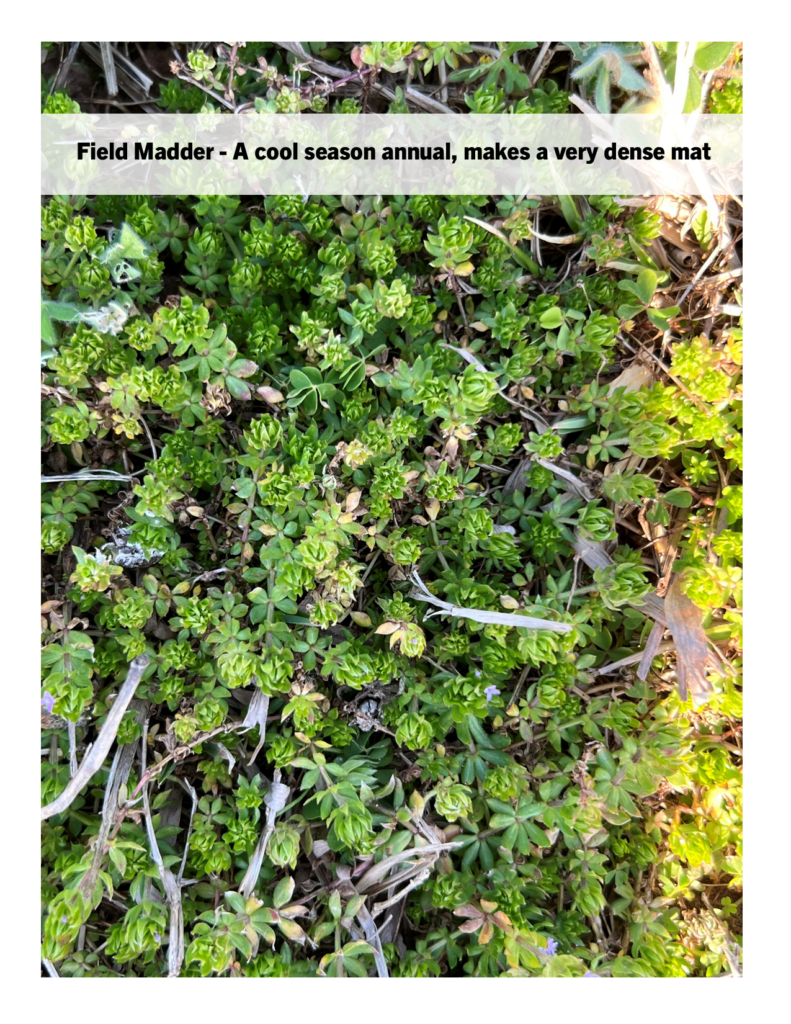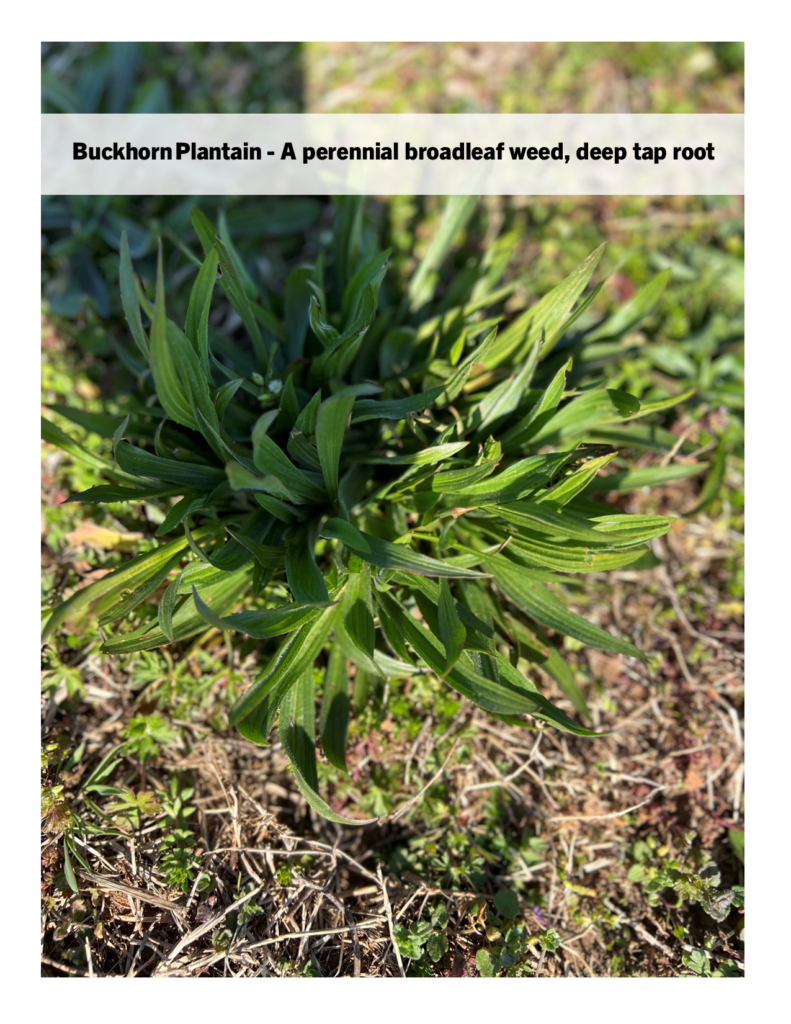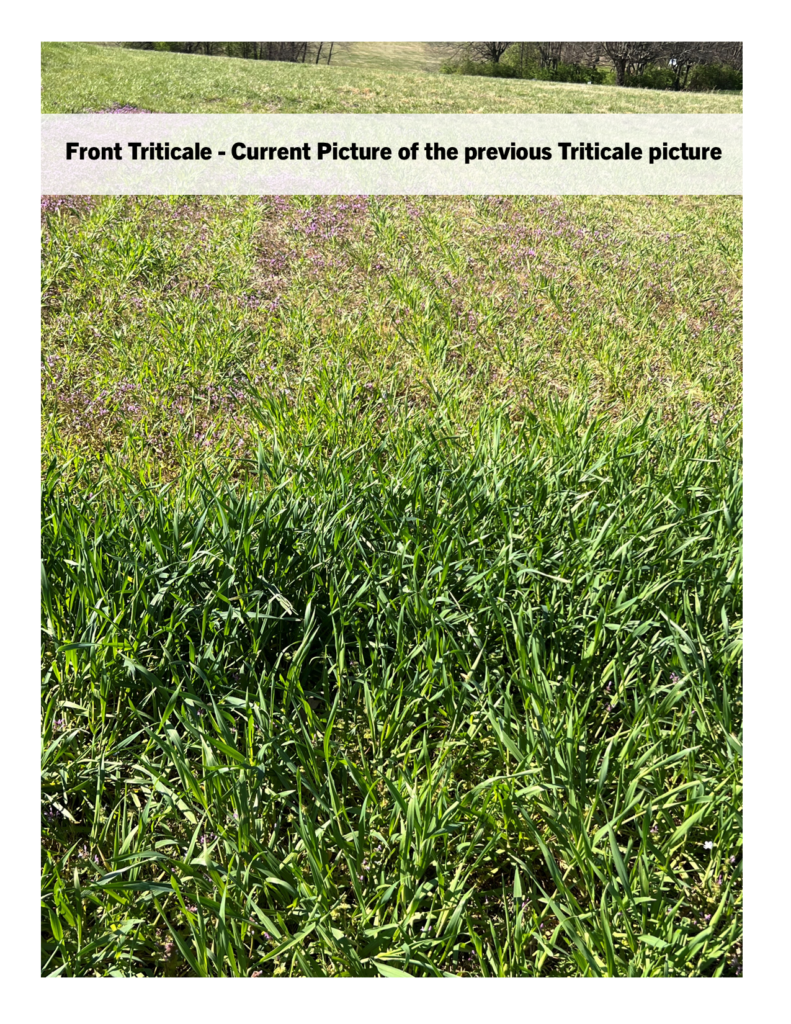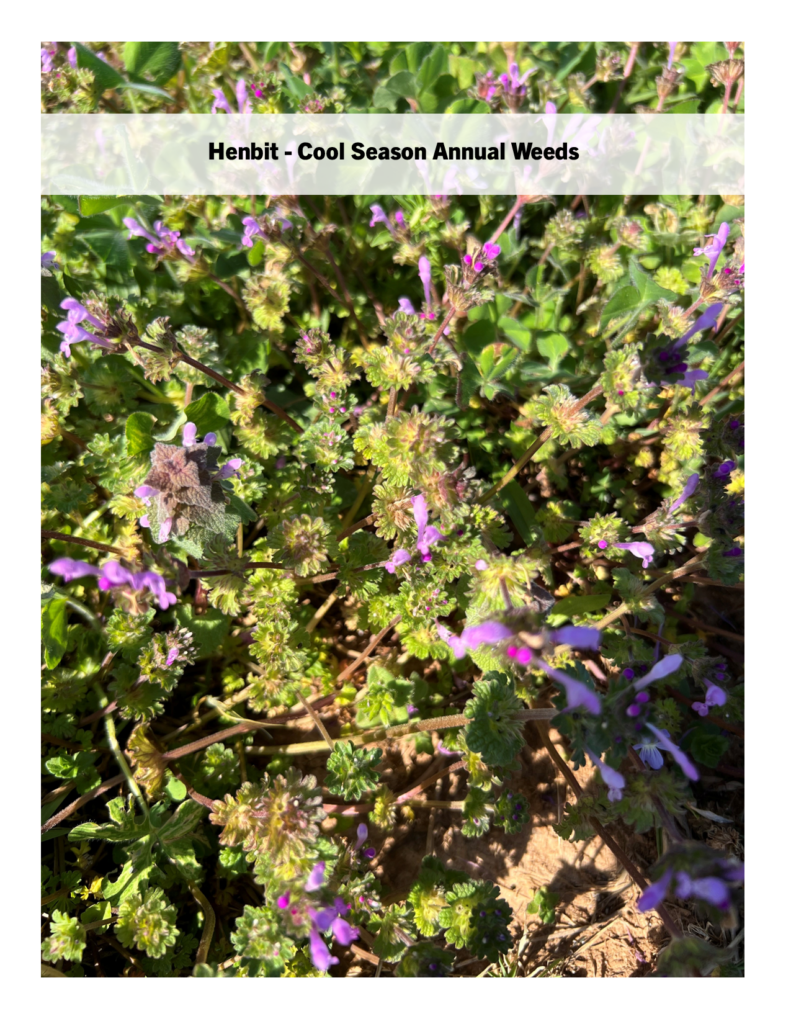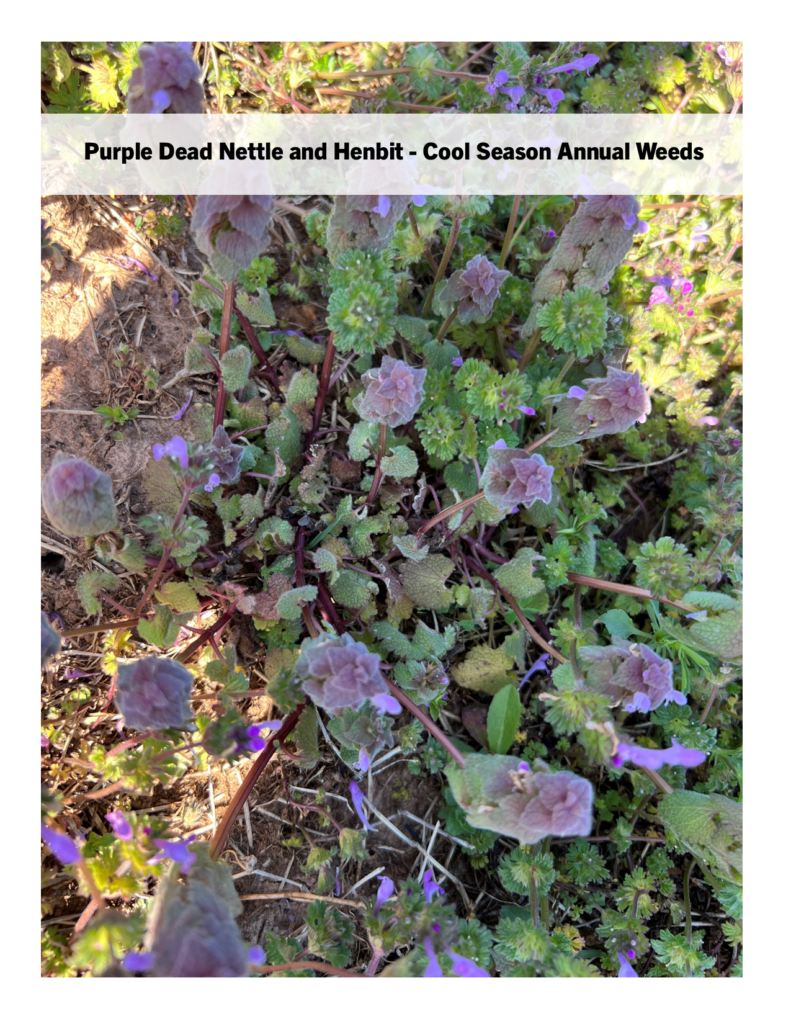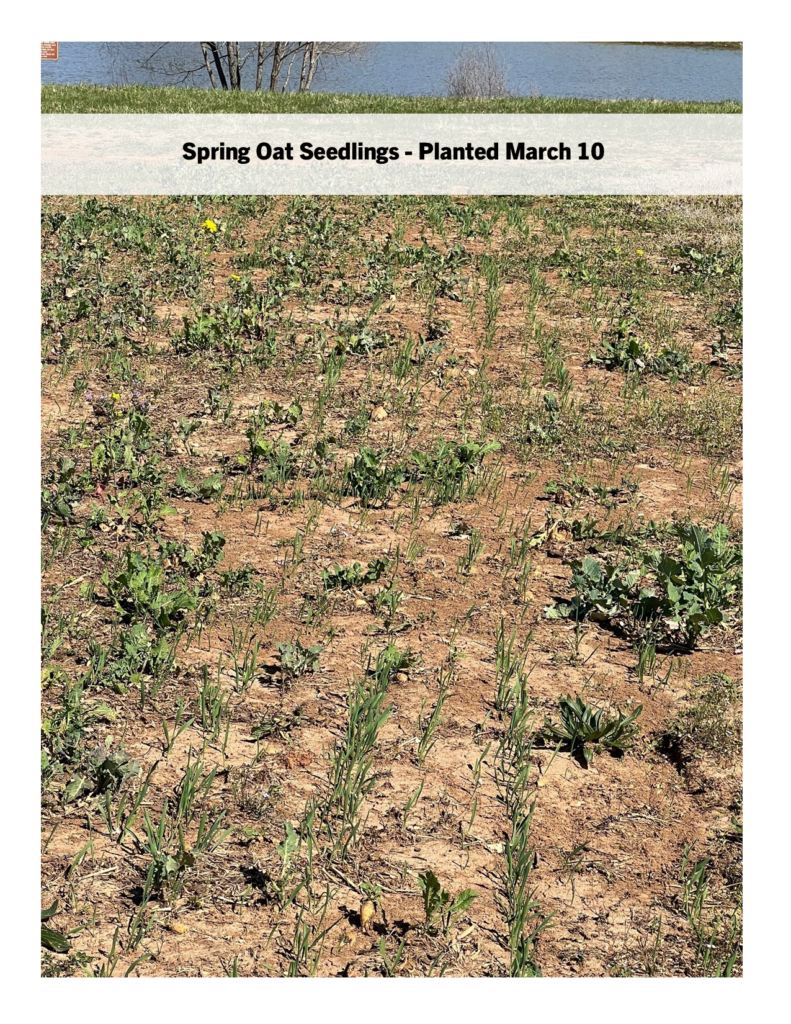To provide maximum amounts of quality forage, it is important to include both cool and warm season grasses in a forage program. Both warm season and cool season forages will be included in the demonstration area.
Warm season plants grow primarily from June through early September. Known as C4 plants, these plants are better adapted to hot, dry weather due to the pathway used to capture carbon dioxide during photosynthesis. Cool season forages, C3 plants, use a different pathway which provides greater tolerance for cold weather, growing best in the spring and fall when soil and air temperatures are cooler.
Comparing C-3 and C-4 plants in Tennessee (generally speaking):
| Characteristic | C-3 Plants (Cool Season) | C-4 Plants (Warm Season) |
|---|---|---|
| Length of Growing Season (In Tennessee) | X | |
| Nutrient Quality | X | |
| Less water required | X | |
| Performs better in heat | X | |
| Performs better in cool temps | X |
June 2025 Forage Plot Update
The forage plots are planted, fertilized, and off to a great start in this growing season. The cool season perennial plots planted last fall have performed beautifully this spring. The moderate temps and plentiful rainfall have made the tall fescues and orchardgrass grow well. All cool season plots have been harvested and mown twice, and nutrient quality results were impressive.
Warm season annuals were planted June 5th. Planted warm season annuals include: Dal’s Big River Crabgrass, Quick N Big Crabgrass, Quick N Big Spreader 19 Crabgrass, and back for the second year: Ray’s Crazy Summer Mix. This mix includes BMR Sorghum-Sudan, Cowpeas, Daikon Radish, Peredovik Sunflower, T-Raptor Hybrid Brassica, and Kings 200 Sudangrass. Warm season perennials, planted last year, include Cheyenne II Bermudagrass and AU Grazer Sericea Lespedeza. Another warm season annual that is back from last year is Mojo crabgrass. Last year’s Mojo plots were left alone to determine how well it reseeded itself. The answer: Very Well.
Remember the forage plots are open and available for you to walk through and study anytime that fits your schedule. They are here for your benefit in order to help you see and study results before committing to a field renovation. Feel free to call the office for an appointment if you would like Rebekah to walk through the plots with you—or walk through on your own. Also, feel free to ask questions about our management to help you determine if the management needed for that particular forage’s success fits your operation’s management. Remember the plot map is located on the website and for your convenience, a QR code to the website is on the sign at the Fence Bracing Demonstration to permit your access to the map at any time. Come see us!
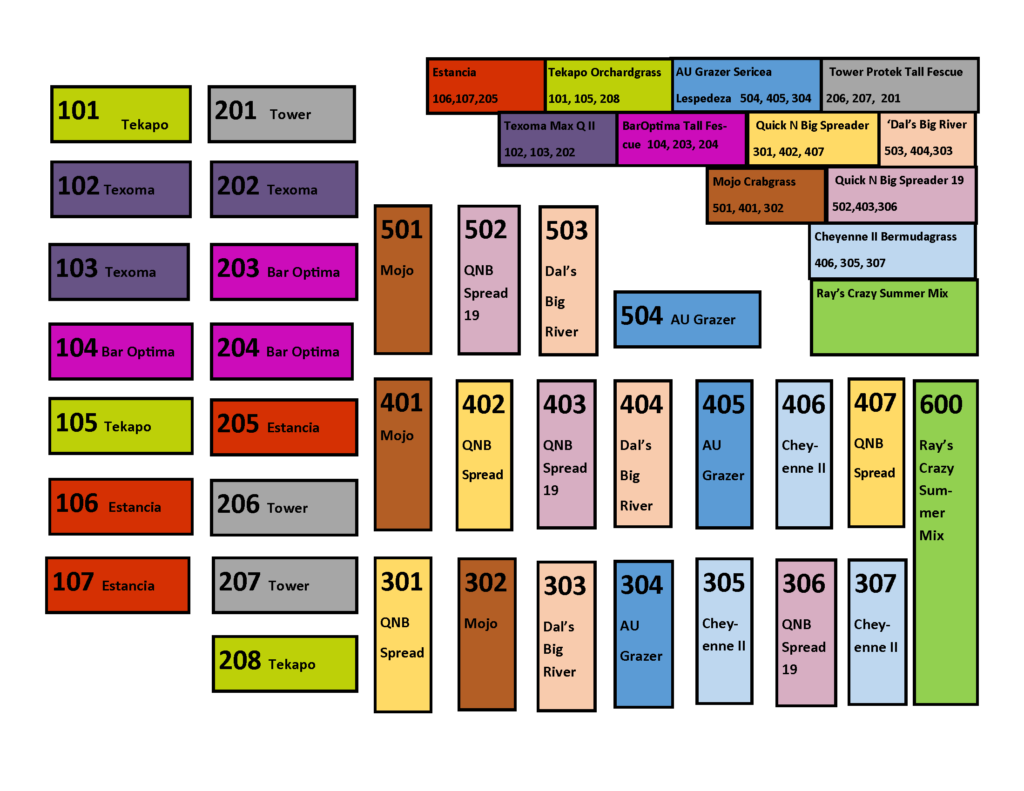
Late March 2025 Update
As planned, the spring oats were planted March 10th and are already up. Seedlings are roughly 1 to 3 inches tall. The triticale planted in the fall looks good as well. It has recovered nicely from the winter damage and is growing rapidly. All in all, things are looking pretty good.
The cool season grasses planted last fall are looking good as well. There is definitely some weed pressure, but most of those are cool season annuals which won’t last much longer. I’ve also been doing some spot spraying to eradicate plantain (or at least slow it down) until the grass is mature enough to tolerate an herbicide that will selectively target the broadleaf weeds in the plots.
Nitrogen has been applied as recommended for cool season forages—approximately 60 pounds per acre when forages begin actively growing again. With all that said, we could definitely use some moisture. Moisture would definitely help things take off and grow.
Late January 2025 Update
The cool season perennial grasses planted last fall are up! They have been doing fairly well as we worked on controlling weed pressure as much as possible without spraying the entire plots. Although an herbicide effective on the broadleaf weeds would normally be safe for the grass, the grass is too immature to safely spray. To keep the weeds at bay and not permit them to shade the germinating and growing grass, I’ve been spot spraying.
After our recent snow and very cold weather, the grass, being new and vulnerable, is showing some damage. That is not unexpected and hopefully the upcoming warmer weather and predicted rainfall will enable it to recover quickly.
Stay tuned for a spring oat planting. I’m planning on spring oats, the variety being ‘Jerry,” in early March. Spring oats can help narrow the forage gap we experience in early spring, and are the only grass (small grain) we could recommend planting this time of year. Planting is a bit of a gamble—of course we want to plant as soon as possible to get the earliest grazing possible. However, oats are susceptible to winter kill—so if we plant, they get up, and we have another winter event, the effort may not be successful. As is typical in agriculture, it’s a gamble.
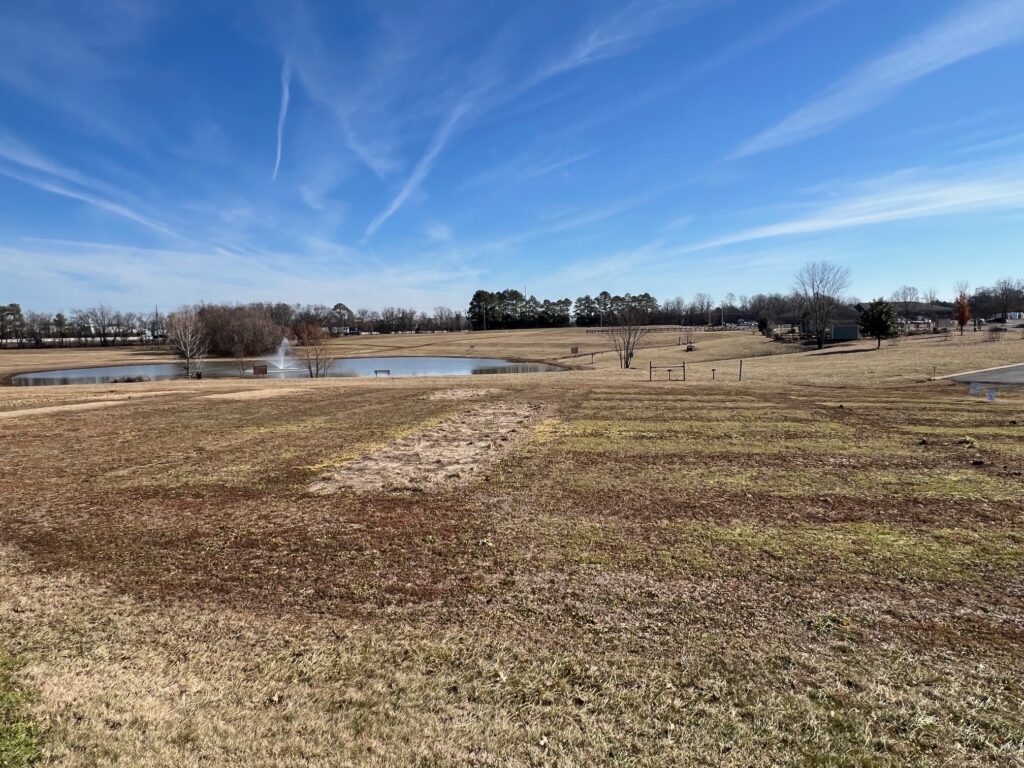
Cool Season Perennial Grass Plots
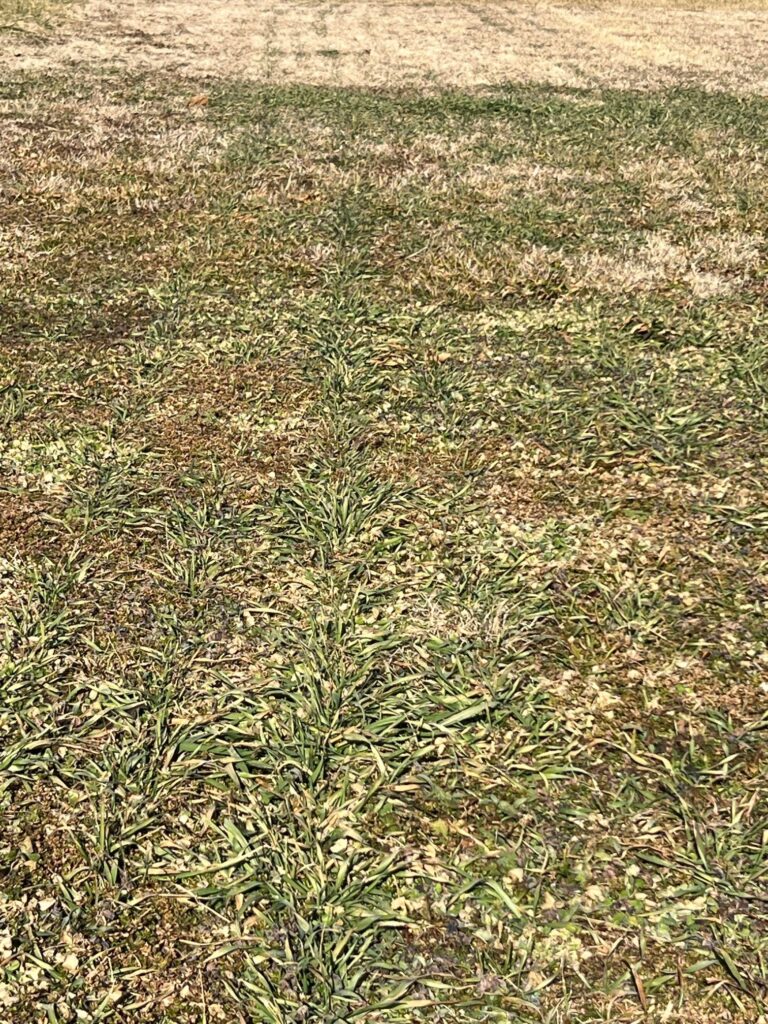
Drilled Triticale Rows in clover and bermudagrass plots
Fall-Winter 2023-2024
A cover crop has been planted over the entire demonstration area. The winter cover crop helps to protect the area and will also help to prevent soil erosion. Cover crops are temporary, or annual crops which serve as beneficial “place holders” until the perennial crop is planted at the proper time. Crimson clover, a legume species, was used because of the legume’s ability to capture atmospheric nitrogen and convert it to soil nitrogen. This reduces the amount of nitrogen fertilizer needed for the forages. Legume species can fix 50 to 150 pounds per acre of nitrogen!
The crimson clover was planted October 10th, but due to the drought we have been experiencing, germination was slow. Whenever a seed is placed in the ground, a race occurs. It’s interesting to see what seeds germinate first. Will it be the seed that was planted? Or will it be other seed that has been existing in the soil “seedbank” for possibly years?
Mid-January 2024 Update:
In this particular germination race it’s apparent that in portions of the forage plot area, crimson clover lost the race. You will see several cool season annual weeds. Some of them are: hairy bittercress, purple dead nettle, common chickweed, and field madder. A perennial species you can also observe is buckhorn (or ribwort) plantain. This entire planting will be replaced in the spring with forage variety plots.
Mid-April 2024 Update:
Oh, the benefits of cover crops! Last fall crimson clover was planted and had a rather slow start due to the extremely dry conditions we were experiencing. Take another look, and you will see that eventually it rained and eventually the crimson clover germinated! We have a beautiful stand of the plant—and it has been a real pleasure to observe the pollinators taking advantage of the early spring food supply. We’ve also observed walkers (of the human kind) taking advantage of the beautiful backdrop to photograph pets and children!
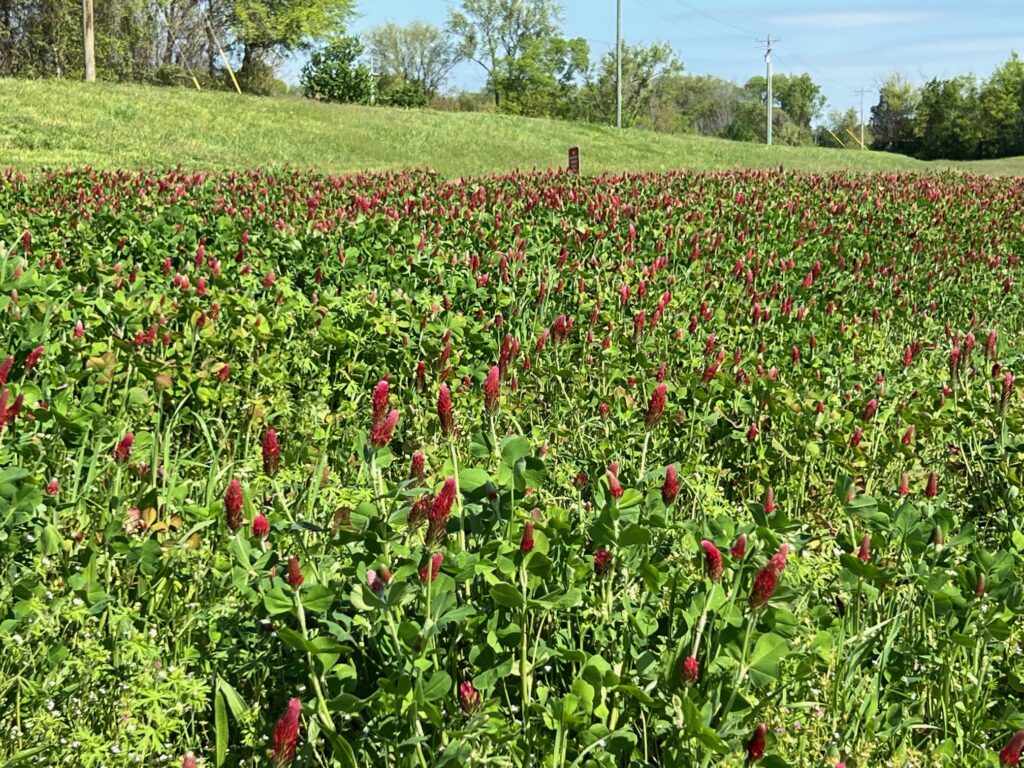
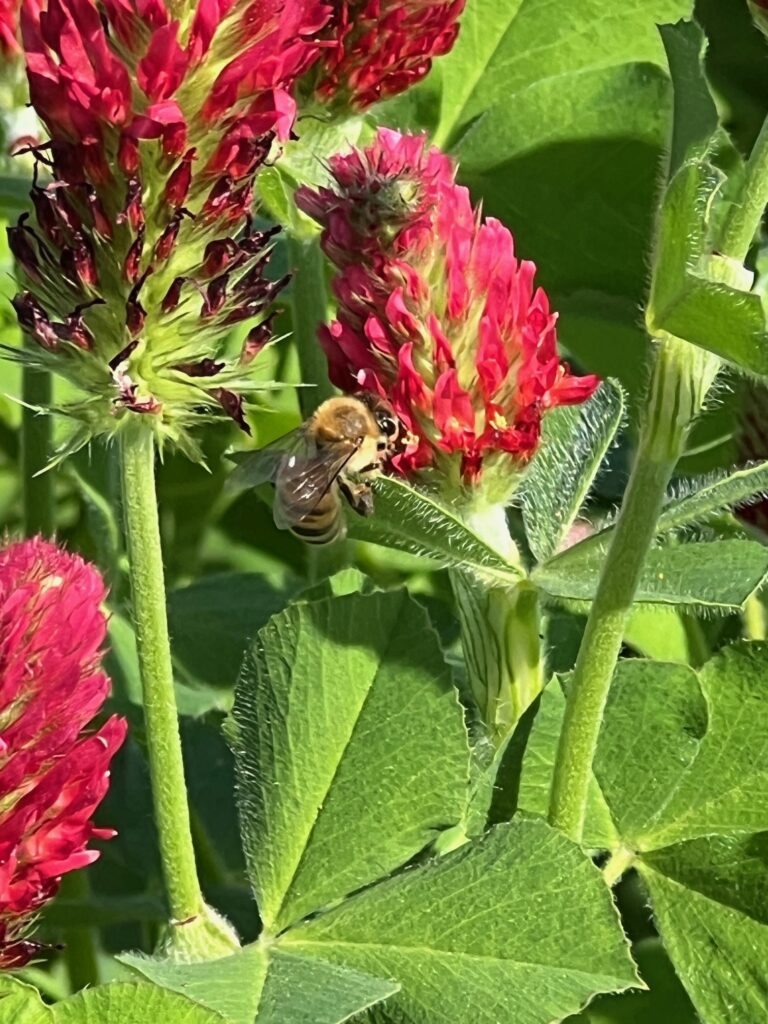
Very soon we will be “terminating” this annual clover (which would have died soon, anyway) to make room for perennial warm season forages. These forages will be a living laboratory to determine nutrient value, tonnage produced, and test management strategies of various forages.
Remember, forage crops are crops which animals eat. The collected information will be available for all to see and provide a valuable tool to inform forage crop decisions for agricultural producers. This demonstration area provides real-time, local data to inform farmer decisions so that they can better feed livestock in their care. The clover did its job well—providing early spring food for pollinators and contributing nitrogen to the soil.
Stay tuned for details concerning what is planted next…..
Mid to Late-May 2024 Update:
All warm season plots are planted. Colored Forage Plots Map below.
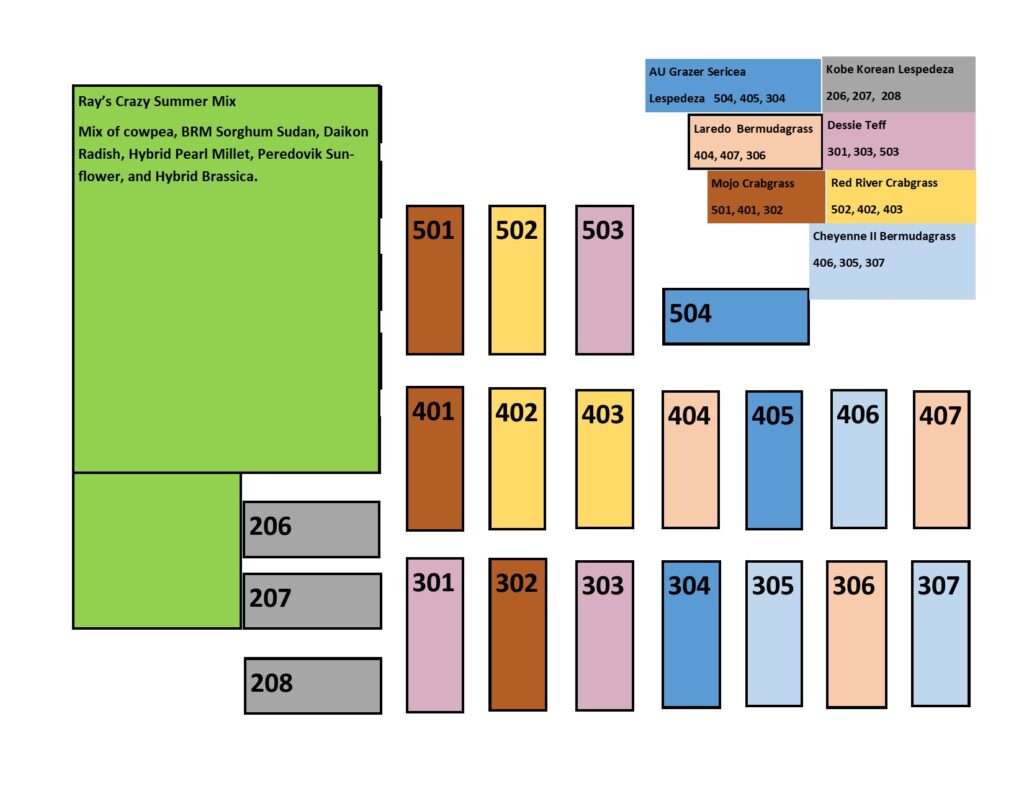
Planted May 16: Laredo (bermudagrass), Cheyenne II (bermudagrass), Red River Crabgrass, Dessie Teff, and Mojo crabgrass. Seeding method was broadcasted and then cultipacked.
Planted May 20: Ray’s Crazy Mix which is a mixture of Cowpea, BMR Sorghum Sudan, Daikon Radish, Hybrid Pearl Millet, Peredovik Sunflower, and Hybrid Brassica. This summer cover crop is in the area that will be renovated to plant cool season forage plots in the fall. This was planted with a no-till drill.
Planted May 28: AU Grazer (improved variety of sericea lespedeza) and Kobe, a Korean lespedeza. AU Grazer is a perennial forage, Korean lespedeza is an annual. Both lespedezas required inoculation prior to planting. Seeding method was broadcasting and then using the cultipacker over the top. These plots have some slope. During this period of time, we have received several heavy rain events with resulting water flowing over the plots. As a result, some seed may have washed with the water; time will tell just how much and where it went.
July 17th Update:
This summer’s hot, dry weather is providing the opportunity to showcase the importance of incorporating warm season forages into the overall forage plan. Why? Because warm season forages are designed to grow in hot and dry weather (see above information regarding C3 and C4 forages). There is variation among warm season options regarding water use efficiency; but as a general rule, warm season forages are more efficient users of water than cool season forages. In other words, they can perform with less water than their cool season counterparts.
Since June 1, we have received only 3.22 inches of rain on the plots. The crabgrass and teff grass plots were harvested July 1 and by next week should be ready to harvest again. The warm season perennials, slower to germinate and establish than the annuals (and even slower due to poor rainfall) are not yet ready for the first harvest.
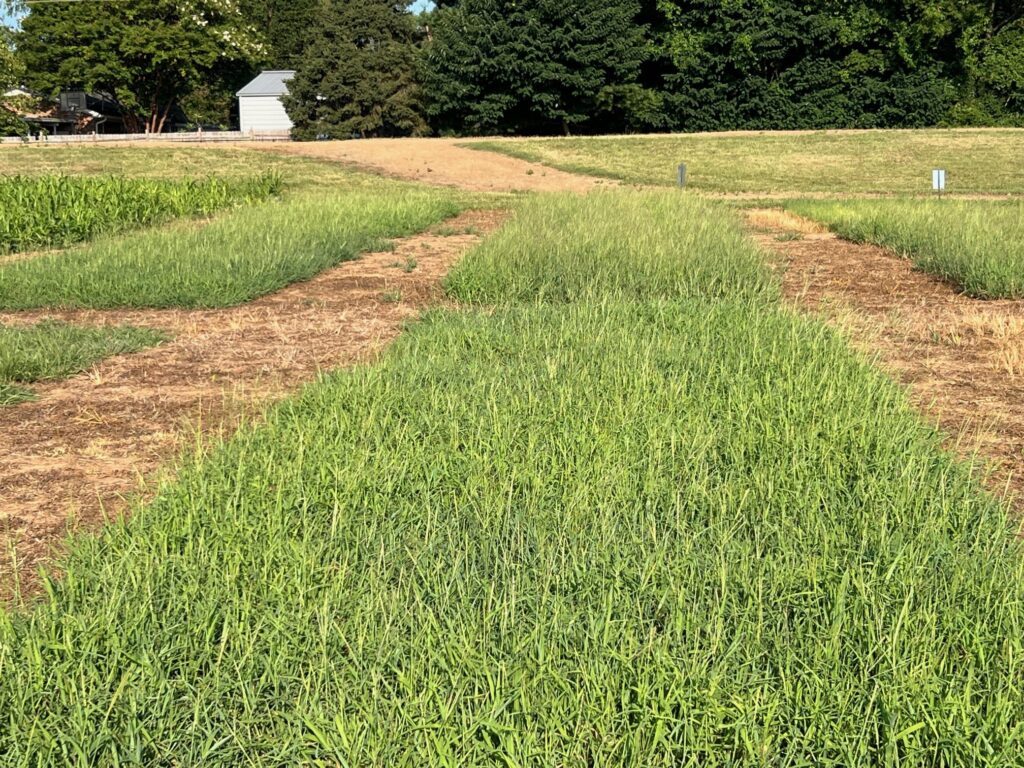
Crabgrass Forage Plots
Lest we get carried away with water efficiency and think warm season options are all we need, remember that warm season forages grow only during the warmer (think summer) months of the year. In Tennessee, cool season forages provide the longest growing season(s) with a huge growth period in the spring and a second smaller growth period again in the fall.
To maximize forage grazing days in Tennessee, both cool and warm season forages are required.
August 28th Update
If you’ve had the opportunity to walk by the forage plots lately, no doubt you’ve noticed that growth has slowed considerably. Much of this is due to the drought conditions we are experiencing, and some is due to days growing shorter and warm season plant growth slowing down as a result.
This has signaled that it is time to prepare for planting the cool season forages which will be in place through the winter months. The large area which was planted in a warm season cover crop mixture will be converted to cool season perennial forage plots, and many of the warm season annual plots interspersed throughout the area will be converted to cool season annual plots. The exception in the warm season annual plots are the Mojo crabgrass plots. We have left Mojo plots unmown to determine next year how well Mojo reseeds itself—a desirable trait for forage-type crabgrasses. How are we preparing for planting? First, we have mowed the plots in preparation for planting. For the warm season annuals, their lifecycle has almost reached the end and mowing will prevent their shading planted seed and preventing germination. Some of the plots had undesirable perennials in them, and those we needed to spray with glyphosate. We also soil tested and applied the recommended fertilizer. Putting down the recommended nutrients will help the already-planted warm season perennials survive the winter and provide much-needed nutrients for soon-to-germinate (hopefully provided we get necessary moisture) young seedlings. With all this done, we are looking forward to receiving much-needed and long-awaited precipitation. Hopefully rain will arrive soon and we will be able to plant.
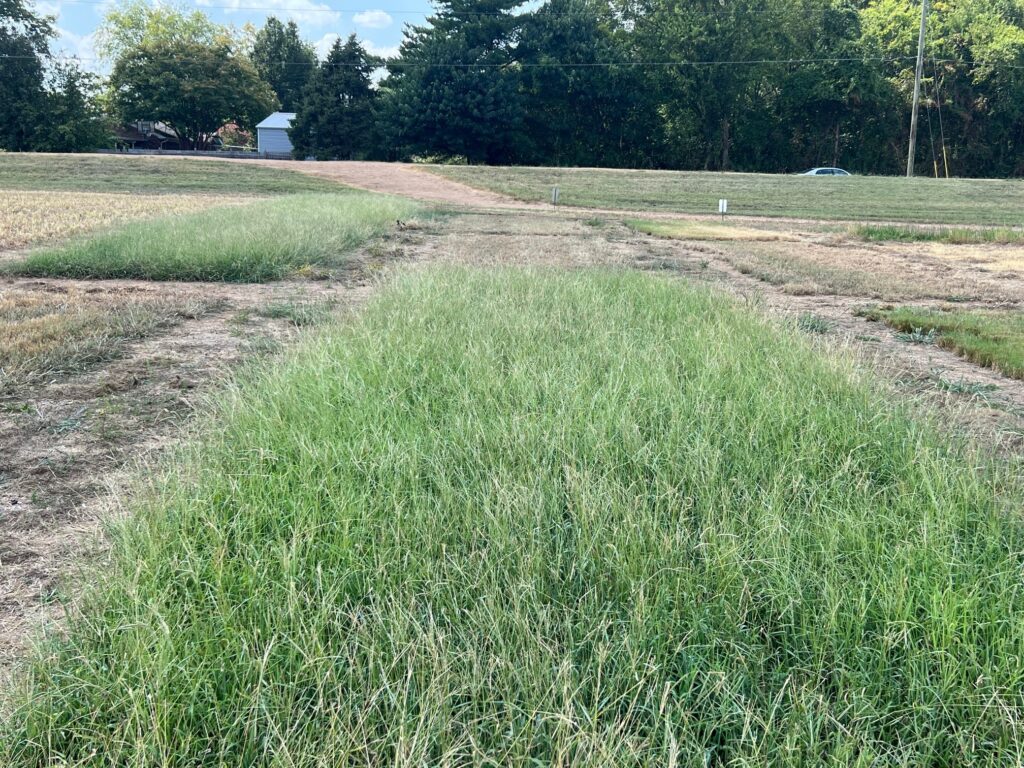
Unmown Mojo crabgrass.
Will it reseed next year?
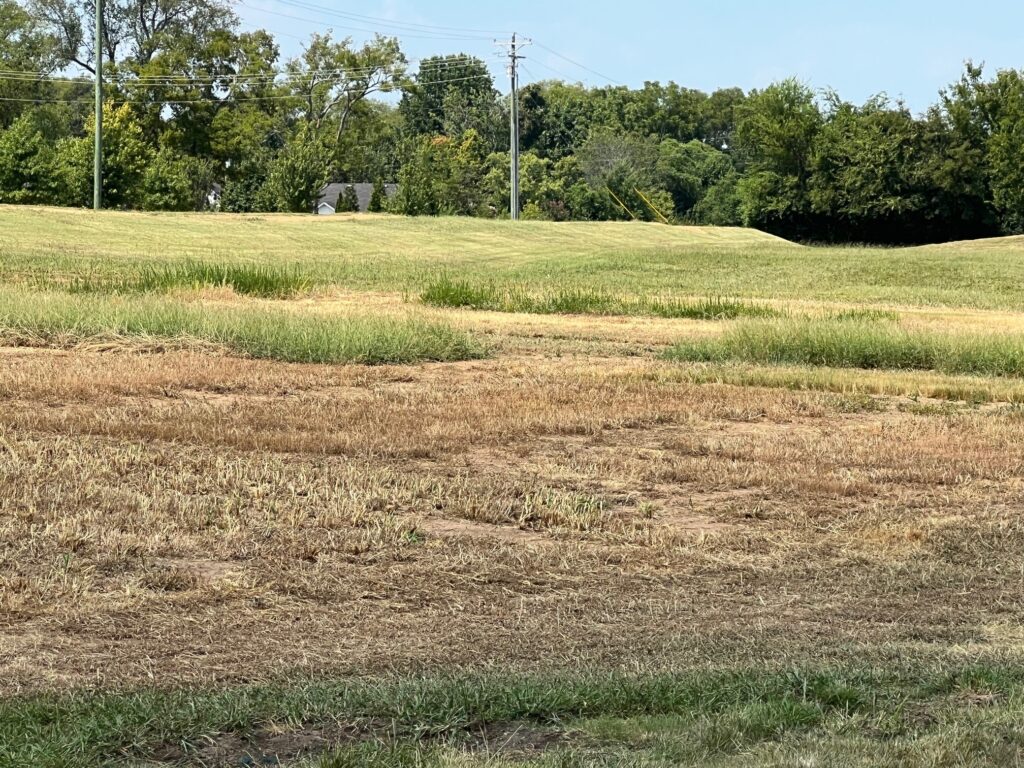
Forage plots being readied for fall planting.
Mid – October Update
All of the cool season seed is in the ground. We’ve planted:
Perennials Planted October 4th:
- Tekapo Orchardgrass
- Texoma MaxQ II Tall Fescue
- Bar Optima Tall Fescue
- Estancia Tall Fescue
- Tower Protek Tall Fescue
Annuals Planted October 4th:
- Cereal Rye
- Fall Oats ‘Bob’
- Black Oats ‘Cosaque’
- A mix of Rape, Kale, and Forage Turnip
Planted October 11th:
- Triticale ‘Hyoctane’
We’re fortunate to have the support of Hogan Seed and Hooper Supply who have generously supplied all of the seed for this fall’s planting.
The last rainfall was September 27- 30th, with a total of about 4 inches. I was hoping to take advantage of the rainfall and get seed in the ground quickly. We planted quickly, but it was amazing to see how quickly the soil dried out. With little to no cover as I prepared to broadcast seed, soil moisture didn’t last long.
Now we wait for rain and monitor for weed competition……
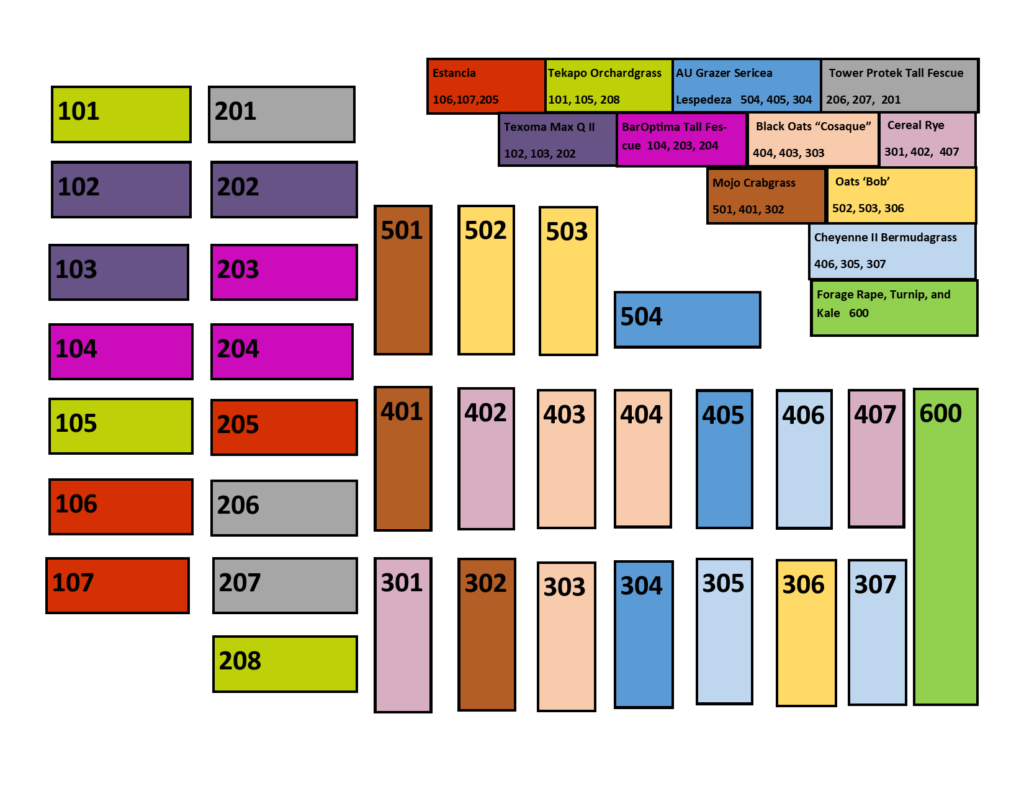
November 7th Update
If you are walking through the forage plots this week (or recently), you will notice broadleaf weeds have emerged in several of the recently-planted cool season perennial plots. Some of the weeds are cool season annual weeds such as chickweed and henbit. The more troublesome weed present in the plots at this time is buckhorn plantain.
Buckhorn plantain (Plantago lanceolata) is a cool season perennial weed—and a serious competitor for the grass we are establishing. This plant with a deep taproot grows well in dry sites, and the drought we are experiencing has provided it an opportunity to germinate before the desirable forages planted have germinated.
To combat this troublesome weed and hopefully prevent it from out-competing the forages we’ve planted, I loaded up a handheld sprayer with a glyphosate solution and spent some time spot-spraying the weeds. Hopefully this will set them back sufficiently to allow the grass to compete. Of course, the ability of the grass to compete is dependent on much-needed rain’s arrival.
The cool season annual plots were faring well with evidence of germination. Their success, however, attracted the attention of about 30 geese. These relentless foragers, it appears, have cleaned out the cool season annual plots. In fact, I chased them from the plots twice as I was spraying for the buckhorn plantain. It remains to be seen if any of the seedlings and/or seed have survived, and if those annual plots will produce a stand. I’m still watching to determine what the next step will be in those plots.
The triticale that was planted in the front of the property is doing quite well. This was planted in a large rectangular area over three types of sod. The first sod was a mixture of primarily clovers. The second sod was an old stand of bermudagrass, and the third was the tall fescue/dallisgrass/crabgrass of the field. All three of these sods were mowed as close as I could get–to about 2.5 inches. The triticale was planted using the no-till drill. It has germinated better than the varieties in the back plots, and I think it is because it was planted into a sod which held soil moisture better than the back plots with no cover. Geese are an issue here as well but damage is less. Once again, I think the drill provided an advantage due to seed being less visible to their observant eyes.
